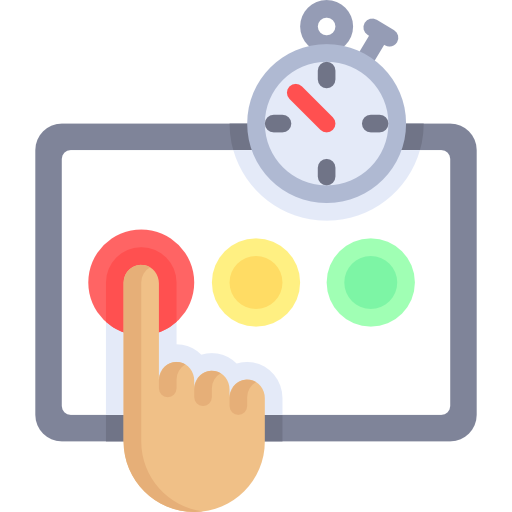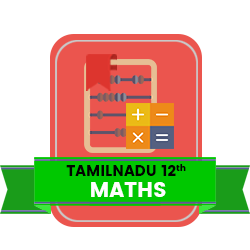11th Standard CBSE Biology Subjects Question Paper Software Subscription
QB365 covers complete information about 11th Standard CBSE Biology Subject for 2024-2025 Exam. Question Bank includes 11th Standard CBSE Biology Subjects Book back, exercise, Updated Question types MCQ, Case Study , Assertion and reason with solution, Previous year asked questions, all possible questions and other key points also. All question with detailed answers are readily available for preparting Maths question papers.
All Chapters Covered

Create Unlimited Question Papers

Access anywhere anytime

Multiple Pattern Question Papers
Share your Question Paper

Font size, line spacing, watermark etc,
Our Other Subjects for 11th Standard CBSE
11th Standard CBSE Biology Chapters / Lessons
The Living World
Biological Classification
Plant Kingdom
Animal Kingdom
Morphology of Flowering Plants
Anatomy of Flowering Plants
Structural Organisation in Animals
Cell : The Unit of Life
Biomolecules
Cell Cycle and Cell division
Transport in Plants
Mineral Nutrition
Photosynthesis in Higher Plants
Respiration in Plants
Plant Growth and Development
Digestion and Absorption
Breathing and Exchange of Gases
Body Fluids and Circulation
Excretory Products and Their Elimination
Locomotion and Movement
Neural control and Coordination
Chemical Coordination and Integration
The Living World
Biological Classification
Plant Kingdom
Animal Kingdom
Morphology of Flowering Plants
Anatomy of Flowering Plants
Structural Organisation in Animals
Cell: The Unit of Life
Biomolecules
Cell Cycle and Cell Division
Transport in Plants
Mineral Nutrition
Photosynthesis in Higher Plants
Respiration in Plants
Plant Growth and Development
Digestion and Absorption
Breathing and Exchange of Gases
Body Fluids and Circulation
Excretory Products and Their Elimination
Locomotion and Movement
Neural Control and Coordination
Chemical Coordination and Integration
11th Standard CBSE Biology Chapters / Lessons Syllabus
Diversity of Living Organisms
Chapter-1: The Living World
What is living? Biodiversity; Need for classification; three domains of life; taxonomy and systematics; concept of species and taxonomical hierarchy; binomial nomenclature; tools for study of taxonomy-museums, zoological parks, herbaria, botanical gardens.
Chapter-2: Biological Classification
Five kingdom classification; Salient features and classification of Monera, Protista and Fungi into major groups: Lichens, Viruses and Viroids.
Chapter-3: Plant Kingdom
Salient features and classification of plants into major groups - Algae, Bryophyta, Pteridophyta, Gymnospermae and Angiospermae (three to five salient and distinguishing features and at least two examples of each category); Angiosperms - classification upto class, characteristic features and examples.
Chapter-4: Animal Kingdom
Salient features and classification of animals non-chordates up to phyla level and chordates up to class level (three to five salient features and at least two examples of each category). (No live animals or specimen should be displayed.)
Structural Organisation in Animals and Plants
Chapter-5: Morphology of Flowering Plants
Morphology and modifications: Tissues
Chapter-6: Anatomy of Flowering Plants
Anatomy and functions of different parts of flowering plants: root, stem, leaf, inflorescence, flower, fruit and seed (to be dealt along with the relevant experiment of the Practical Syllabus)
Chapter-7: Structural Organisation in Animals
Animal tissues: Morphology, anatomy and functions of different systems (digestive, circulatory, respiratory, nervous and reproductive) of an insect (cockroach). (a brief account only)
Cell: Structure and Function
Chapter-8: Cell-The Unit of Life
Cell theory and cell as the basic unit of life: Structure of prokaryotic and eukaryotic cells; Plant cell and animal cell; cell envelope; cell membrane, cell wall; cell organelles - structure and function; endomembrane system, endoplasmic reticulum, Golgi bodies, lysosomes, vacuoles; mitochondria, ribosomes, plastids, microbodies; cytoskeleton, cilia, flagella, centrioles (ultrastructure and function); nucleus, nuclear membrane, chromatin, nucleolus.
Chapter-9: Biomolecules
Chemical constituents of living cells: biomolecules, structure and function of proteins, carbohydrates, lipids, nucleic acids, enzymes, types, properties, enzyme action.
Chapter-10: Cell Cycle and Cell Division
Cell cycle, mitosis, meiosis and their significance.
Plant Physiology
Chapter-11: Transport in Plants
Movement of water, gases and nutrients; cell to cell transport, Diffusion, facilitated diffusion, active transport; plant-water relations, Imbibition, water potential, osmosis, plasmolysis; long distance transport of water - Absorption, apoplast, symplast, transpiration pull, root pressure and guttation; transpiration, opening and closing of stomata; Uptake and translocation of mineral nutrients - Transport of food, phloem transport, massflow hypothesis; diffusion of gases.
Chapter-12: Mineral Nutrition
Essential minerals, macro- and micronutrients and their role; deficiency symptoms; mineral toxicity; elementary idea of hydroponics as a method to study mineral nutrition; nitrogen metabolism, nitrogen cycle, biological nitrogen fixation.
Chapter-13: Photosynthesis in Higher Plants
Photosynthesis as a mean of autotrophic nutrition; site of photosynthesis, pigments involved in photosynthesis (elementary idea); photochemical and biosynthetic phases of photosynthesis; cyclic and non cyclic photophosphorylation; chemiosmotic hypothesis; photorespiration; C3 and C4 pathways; factors affecting photosynthesis
Chapter-14: Respiration in Plants
Exchange of gases; cellular respiration - glycolysis, fermentation (anaerobic), TCA cycle and electron transport system (aerobic); energy relations - number of ATP molecules generated; amphibolic pathways; respiratory quotient.
Chapter-15: Plant - Growth and Development
Seed germination; phases of plant growth and plant growth rate; conditions of growth; differentiation, dedifferentiation and redifferentiation; sequence of developmental processes in a plant cell; growth regulators - auxin, gibberellin, cytokinin, ethylene, ABA; seed dormancy; vernalisation; photoperiodism.
Human Physiology
Chapter-16: Digestion and Absorption
Alimentary canal and digestive glands, role of digestive enzymes and gastrointestinal hormones; Peristalsis, digestion, absorption and assimilation of proteins, carbohydrates and fats; calorific values of proteins, carbohydrates and fats; egestion; nutritional and digestive disorders - PEM, indigestion, constipation, vomiting, jaundice, diarrhoea.
Chapter-17: Breathing and Exchange of Gases
Respiratory organs in animals (recall only); Respiratory system in humans; Mechanism of breathing and its regulation in humans - exchange of gases, transport of gases and regulation of respiration, respiratory volume; disorders related to respiration - asthma, emphysema, occupational respiratory disorders
Chapter-18: Body Fluids and Circulation
Composition of blood, blood groups, coagulation of blood; Composition of lymph and its function; human circulatory system-Structure of human heart and blood vessels; cardiac cycle, cardiac output, ECG; double circulation; regulation of cardiac activity; disorders of circulatory system - hypertension, coronary artery disease, angina pectoris, heart failure.
Chapter-19: Excretory Products and Their Elimination
Modes of excretion - ammonotelism, ureotelism, uricotelism; human excretory system - structure and function; urine formation, osmoregulation; regulation of kidney function - renin-angiotensin, atrial natriuretic factor, ADH and diabetes insipidus; role of other organs in excretion; disorders - uraemia, renal failure, renal calculi, nephritis; dialysis and artificial kidney.
Chapter-20: Locomotion and Movement
Types of movement - ciliary, flagellar, muscular; skeletal muscle- contractile proteins and muscle contraction; skeletal system and its functions; joints; disorders of muscular and skeletal system - myasthenia gravis, tetany, muscular dystrophy, arthritis, osteoporosis, gout.
Chapter-21: Neural Control and Coordination
Neuron and nerves; Nervous system in humans - central nervous system; peripheral nervous system and visceral nervous system; generation and conduction of nerve impulse; reflex action; sensory perception; sense organs; elementary structure and functions of eye and ear.
Chapter-22: Chemical Coordination and Integration
Endocrine glands and hormones; human endocrine system - hypothalamus, pituitary, pineal, thyroid, parathyroid, adrenal, pancreas, gonads; mechanism of hormone action (elementary idea); role of hormones as messengers and regulators, hypo - and hyperactivity and related disorders; dwarfism, acromegaly, cretinism, goiter, exophthalmic goiter, diabetes, Addison's disease.
The Living World
What Is ‘Living’?-Diversity In The Living World-Taxonomic Categories-Taxonomical Aids
Biological Classification
Kingdom Monera-Kingdom Protista-Kingdom Fungi-Kingdom Plantae-Kingdom Animalia-Viruses, Viroids And Lichens
Plant Kingdom
Algae-Bryophytes-Pteridophytes-Gymnosperms-Angiosperms-Plant Life Cycles And Alternation Of Generations
Animal Kingdom
Basis Of Classification-Classification Of Animals
Morphology of Flowering Plants
The Root-The Stem-The Leaf-The Inflorescence-The Flower-The Fruit-The Seed-Semi-Technical Description Of A Typical Flowering Plant-Description Of Some Important Families
Anatomy of Flowering Plants
The Tissues-The Tissue System-Anatomy Of Dicotyledonous And Monocotyledonous Plants-Secondary Growth
Cell: The Unit of Life
What Is A Cell?- Cell Theory-An Overview Of Cell-Prokaryotic Cells-Eukaryotic Cells
Structural Organisation in Animals
Animal Tissues-Organ and Organ System-Earthworm-Cockroach-Frogs
Biomolecules
How to Analyse Chemical Composition?-Primary and Secondary Metabolites-Biomacromolecules-Proteins-Polysaccharides-Nucleic Acids-Structure of Proteins-Nature of Bond Linking Monomers in a Polymer-Dynamic State of Body Constituents - Concept of Metabolism-Metabolic Basis for Living-The Living State-Enzymes
Cell Cycle and Cell Division
Cell Cycle-M Phase-Significance Of Mitosis-Meiosis-Significance Of Meiosis
Transport in Plants
Means of Transport-Plant-Water Relations-Long Distance Transport of Water-Transpiration-Uptake and Transport of Mineral Nutrients-Phloem Transport: Flow From Source to Sink
Mineral Nutrition
Methods to Study The Mineral Requirements of Plants-Essential Mineral Elements-Mechanism of Absorption of Elements-Translocation of Solutes-Soil As Reservoir of Essential Elements-Metabolism of Nitrogen
Photosynthesis In Higher Plants
What do we Know?-Early Experiments-Where does Photosynthesis is Take Place?-How Many Pigments are Involved in Photosynthesis?-What is Light Reaction?-The Electron Transport-Where are the ATP and NADPH used?-The C4 Pathway-Photorespiration-Factors Affecting Photosynthesis
Respiration in Plants
Do Plants Breathe?-Glycolysis-Fermentation-Aerobic Respiration-The Respiratory Balance Sheet-Amphibolic Pathway-Respiratory Quotient
Plant Growth and Development
Growth-Differentiation, Dedifferentiation And Redifferentiation-Development-Plant Growth Regulators-Photo Periodism-Vernalisation
Digestion and Absorption
Digestive System-Digestion of Food-Absorption of Digested Products-Disorders of Digestive System
Breathing and Exchange of Gases
Respiratory Organs-Mechanism of Breathing-Exchange of Gases-Transport of Gases-Regulation of Respiration-Disorders of Respiratory System
Body Fluids and Circulation
Blood-Lymph (Tissue Fluid)-Circulatory Pathways-Double Circulation-Regulation of Cardiac Activity-Disorders of Circulatory System
Excretory Products and their Elimination
Human Excretory System-Urine Formation-Function of the Tubules-Mechanism of Concentration of The Filtrate-Regulation of Kidney Function-Maturation-Role of Other Organs in Excretion-Disorders of The Excretory System
Locomotion and Movement
Types Of Movement-Muscle-Skeletal System-Joints-Disorders Of Muscular And Skeletal System
Neural Control and Coordination
Neural System-Human Neural System-Neuron As Structural And Functional Unit Of Neural System-Central Neural System-Reflex Action And Reflex Arc-Sensory Reception And Processing
Chemical Control And Coordination
Endocrine Glands And Hormones-Human Endocrine System-Hormones Of Heart, Kidney And Gastro Intestinal Tract-Mechanism Of Hormone Action
Features in Question Paper Preparation software

(or) type Question

Add or Remover

Sub Questions

Adding Notes

Multiple Pattern

All subjects available
How to Create 11th Standard CBSE Biology Question Paper


11th Standard CBSE Biology
- Covers all chapters
- Unique Creative Questions
- Unlimited Question Paper
- Multiple Patterns & Answer keys
3888
3499



